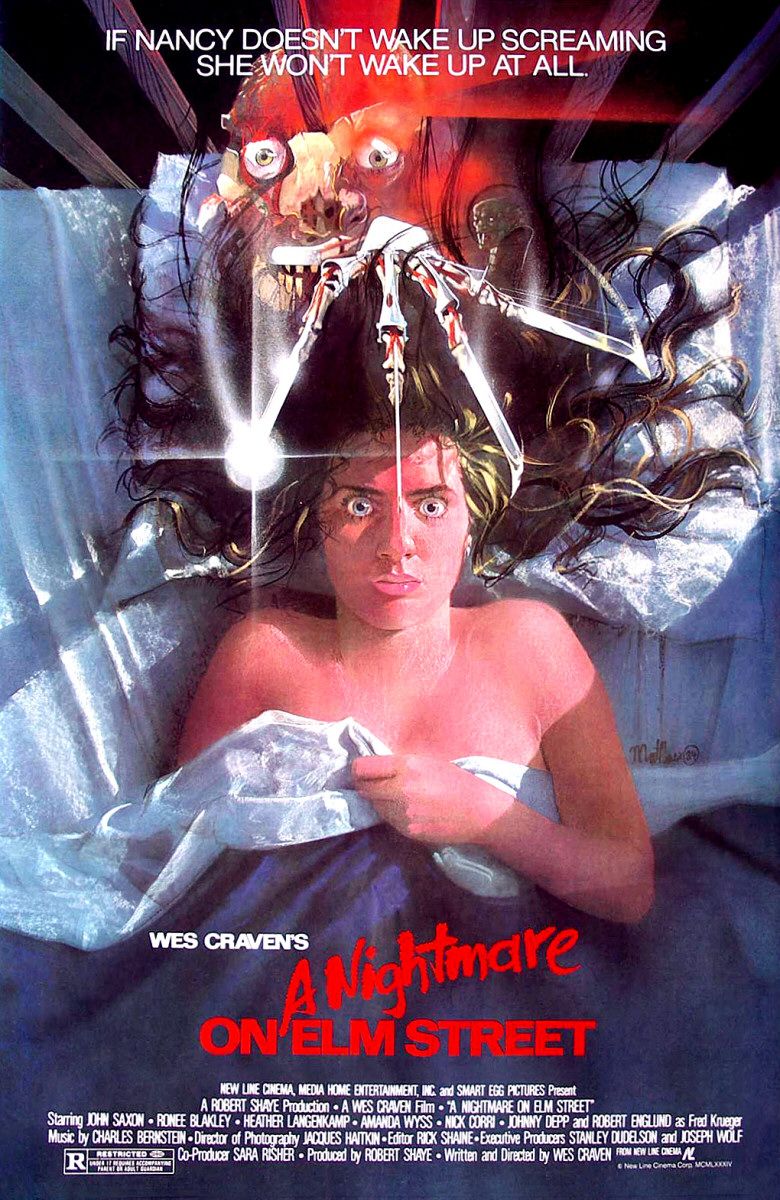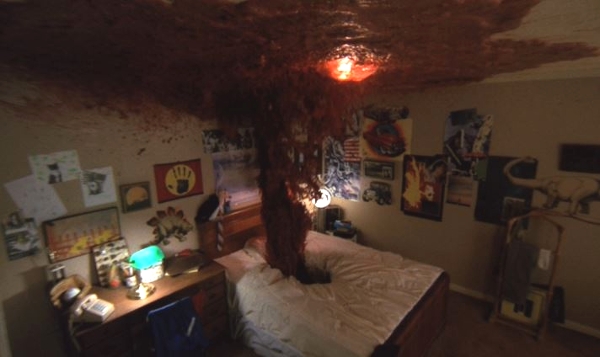"One, two, Freddy's coming for you…" We all know that spine-tingling jingle that subtly defines one of horror's most intimidatingly successful franchises, A Nightmare on Elm Street (Wes Craven, 1984). Craven's legacy bears rich classics that have excelled beyond anyone's expectations, with his filmography boasting titles such as The Last House on the Left (1972), The Hills Have Eyes (1977), and everybody's cliche-twisting slasher, Scream (1996).
The great success Craven has received is admirable, yet there is an overt lack of discussion regarding symbolism and dissection when it comes to the titular character across every Nightmare on Elm Street film, the boogeyman himself, Freddy Krueger (Robert Englund). The franchise holds a total of nine films, with the first procuring the densest socio-political issues, alongside the most candid portrayal of Krueger. As the series has developed, so has the rambunctious behaviour from his character, with his later appearances emphasizing the more chucklesome and gabby side to his persona. To fully decipher what he represents we need to take a step back to the early 1980s and unravel the twisted world of Freddy Krueger.

The 1960s and 1970s brought about great change, where the revolution of attempted freedom was at large, particularly in the USA. What brought about this dire need of a system change was a generalised anger over the lack of equality, civil rights, and the state of affairs across the world. These worrisome concerns were protested by the youth of America, leading to many filmmakers who were heavily involved in these stands becoming influenced by a furied ethical climate. The consequences of this were not always directly pronounced, with a favouring of symbolism and metaphorical values. One of the most primary examples of course being A Nightmare on Elm Street. The themes are manifested almost solely through Krueger, as he embodies denial, vulnerability, dissonance, and unjust dominance.

The adaptive dream notion behind A Nightmare on Elm Street is well known. Craven had been inspired by the sudden death syndrome seen in a group of Hmong refugees, with Krueger's stalking nature being influenced by a creeper that Craven had witnessed during his childhood. Withdrawing away from Krueger briefly is the setup that forces his legendary status; from the start, the setting is not reflected in archetypal horror locations. Instead of the haunted house or cemetery, we are presented with white picket fences in a white suburban neighbourhood. Straight away Craven is mocking the societal frame that cradled America's elite, who would infamously belittle those who wanted to change the country's structure for a fairer place. And what enforces the mimicry is the juxtaposition of what Krueger represents against the apparent bed of roses.

Krueger withholds his victims through their dreams. He is not only controlling people at their most vulnerable state, but when they also have no chance of escape, people psychically need sleep to survive. In the first film the lead protagonist Nancy (Heather Langenkamp), has to battle against Krueger in her dreams to prevent her imminent death. Throughout the film, their contact is initiated through Nancy's dreams, with her actually suffering in real life with any injuries she may obtain in these dream battles. Krueger presents himself with no invite and eventually becomes such a harrowing force in her life that the lines between dreams and reality become blurred. Without going on a tangent, the dream state is riddled with our subconscious thoughts, and what we aim to repress. Krueger is a symbol of the aftereffect that is born through neglect and generational cruelty that society attempts to abandon.

Krueger's charred skin, deep with lacerations and a hollowed complexion is not just purposeful to amp up the gore factor, it serves as a plot reaction. The brief history surrounding his origins is identified from the first film, where we find out that Nancy's mother Marge (Ronee Blakley), and the other parents on their street burned Freddy Krueger to his death in a collective vigilante mission, due to Krueger being a child killer.

What is intentionally ironic is the reason behind his motivation and the consequences of the parent's actions. Needless to say, Krueger is riddled with vengeance, and he wants to destroy these adolescents to fuel his sick desires and to punish their families. The adults of Springwood are villainous, not only in their own deeds but additionally through their individual downfalls, including selfishness and avoidance of admittance.

Their own matters of justice create a dark past that must not be uttered, forming an air of uncertainty and moral evilness over the town's authority figures. Through the older generations' actions, a cycle of repercussions has been conjured. Their children are suffering as a result of their misdeeds. Nancy and her friends are targeted by Krueger and are forced to fight it out alone, in a vicious system of repressed guilt. This fixes Krueger's innate motive to disrupt the false civil harmony created, as underneath the façade lies a seedy underbelly.

What furthers Krueger as a direct symbol of rebellion is his position as a fully fleshed-out villain, rather than an antagonist with an anonymous aura haloing over them. Throughout all of the films, Kruger is an all-performing show character, whose infectious personality has forced audiences over time to warm to him more than his victims. Krueger represents the evil in society, but just as humans do, we cannot help but be tempted by such wickedness. He talks, runs, jokes, laughs, and most importantly toys with his victims, showing genuine enjoyment in killing his prey.
He evokes a personality, not just a wallowing killer behind a mask. There is nothing at fault with the great silent killers, such as Michael Myers and Jason Voorhees, but Krueger's sensibility has a mysterious sense of threat that only he can achieve. He does not feed off of people's fears as a source of power, instead, he uses that menacing allure to break down his victim's shield. The thought of a speechless killer is terrifying, but the thought of one who plays a game of cat and mouse (just because he can) creates a daunting and disturbed atmosphere.

Throughout the rest of the franchise Krueger's comedic tone heightens, almost falling down the rabbit hole of 1980s fruitfully humorous horror, however, his true looming nature has remained the same. In comparison to other big franchises of the genre, A Nightmare on Elm Street has fewer titles, which is mostly due to the 2010 reboot completely failing at expanding the universe. But, despite such setbacks in progression, the most pivotal element across every film is the tonal roots that the Nightmare films stay true to, with Freddy Krueger being one of horror's most definable and complex characters.
Love to read more about iconic horror villains? Check out our article on Jason Voorhees here.
